by Gerald Astor
Behind the strategy that governed the American air war in Europe during World War II lay events and ideas that dated back to World War I and the 1920s. The first strategic bombing raid in 1915 deployed not airplanes but German Zeppelins, rigid airships that dumped ordnance on the east coast of Great Britain. Two years later Germany’s Gotha bomber, a machine capable of a round trip from Belgian bases, struck at Folkestone, a port through which British soldiers embarked for the front. This raid killed 300 people, including 115 soldiers. The bomber had proven itself as a weapon against a military target.
A few weeks later, 14 Gothas attacked London in the first fixed-wing assault upon civilians and their institutions. The dead and wounded totaled 600, and the raid wrought consternation among the public and the government. The British hastily summoned fighter units to gird the cities. To counter the defensive cordon, the Gothas flew night missions. With primitive navigational tools and no bombsights, the raiders drizzled explosives without any pretense of hitting military or industrial targets. Theoreticians of war now had a new factor to enter into equations: the terror of massive strikes upon workers producing the stuff of war.
Brigadeer General Billy Mitchell, who had only earned his wings in 1916, commanded the air force for General John J. Pershing and his American Expeditionary Force in France. Mitchell met Maj. Gen. Hugh M. Trenchard, commander of the Royal Flying Corps, who quickly persuaded the American that the “airplane is an offensive and not a defensive weapon.” Mitchell grasped the possibilities of taking the war behind the lines and plotted a huge raid that would blast German military and industrial targets in the autumn of 1918. A correspondent for the Associated Press wrote, “His navy of the air is to be expanded until no part of Germany is safe from the rain of bombs…. The work of the independent force is bombing munitions works, factories, cities and other important centers behind the German lines…. Eventually Berlin will know what an air raid means, and the whole great project is a direct answer to the German air attacks on helpless and unfortified British, French and Belgian cities.”
World War I ended before Mitchell could demonstrate what his “navy of the air” might achieve, but he continued to expound his ideas. While accepting the need for control of the skies through destruction of the enemy air forces, he said, “It may be … the best strategy to damage and destroy property, and to kill and disable an enemy’s forces and resources at points far removed from the field of battle of either armies or navies.” Implicitly, Mitchell accepted war on civilians.
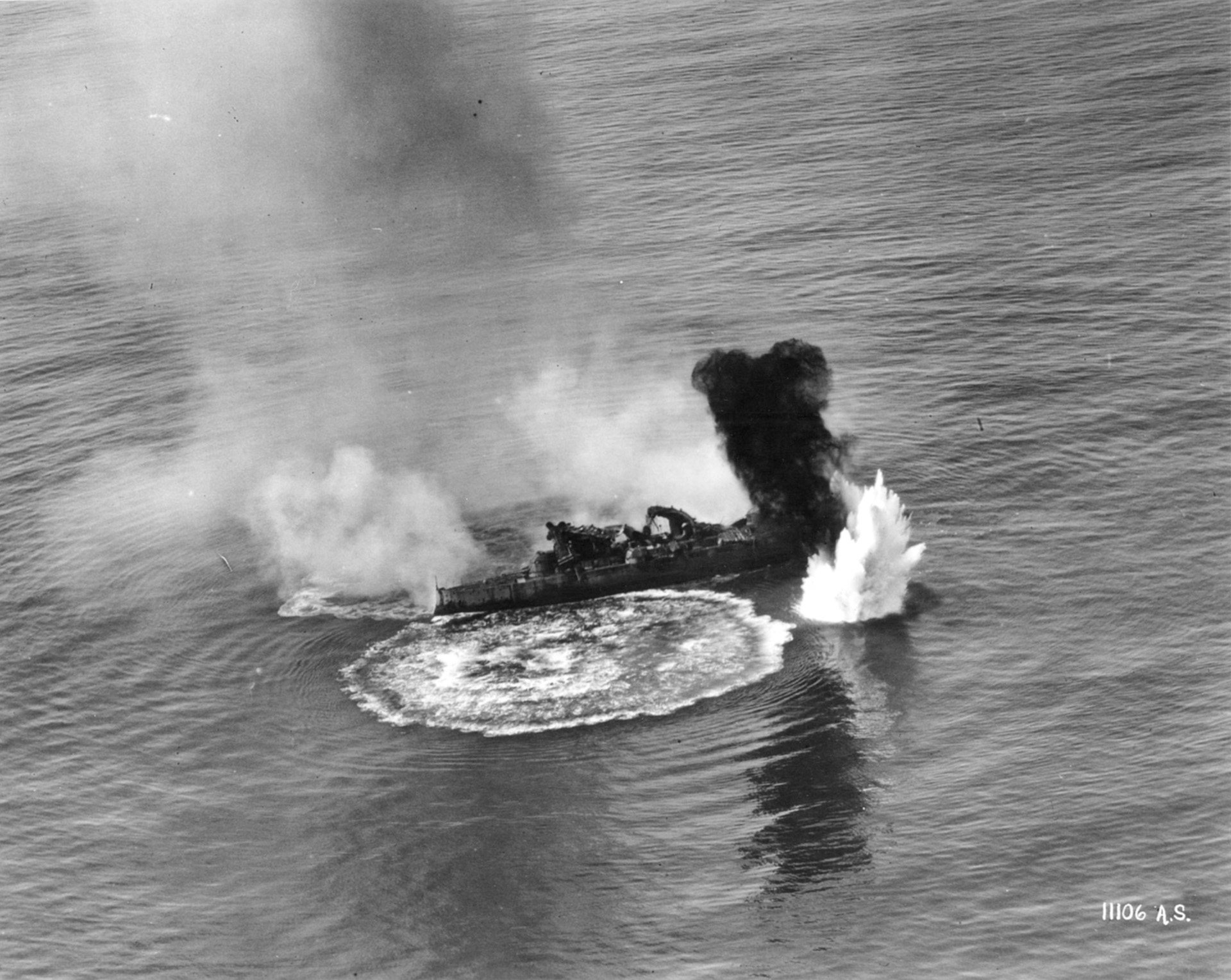
In 1921 and 1923, Mitchell demonstrated that bombers could sink some anchored warships. The experiments confirmed that aircraft could destroy substantial stationary targets, but admirals scoffed that vessels under way could easily avoid the attacks. The Army dismissed the show as irrelevant for its vision of warfare, which was to slugg it out with hostiles while capturing territory.
While Mitchell and Trenchard promulgated their ideas of aerial offensives, a contemporary Italian, General Giulio Douhet, preached that modern war involved the entire society, including “the soldier carrying his rifle, the woman loading shells in a factory, the farmer growing his wheat, the scientists experimenting in the laboratory.” Douhet spoke not only of smashing wartime production but argued, “How could a country go on living and working, oppressed by the nightmare of imminent destruction.” He conceded that such a war without mercy eliminated considerations of morality.
Americans partially bought into the Douhet’s theories. They buried the idea of indiscriminate raids that slaughtered nonmilitary people and emphasized hitting industrial production, transportation facilities, and military centers. Promoters of strategic bombing hypothesized that by destroying the goods of war and the will of the people to resist, conflicts could be shortened and the wholesale carnage of the World War I battlefield avoided.
Mitchell’s outspoken demands for an independent air force ended his career, but acolytes like Henry “Hap” Arnold, Carl Spaatz, and Ira Eaker retained positions in the military hierarchy. They successfully promulgated the doctrine of strategic bombing, accurate targeting of enemy installations and facilities. Toward that end, in 1933 the War Department approved a prospectus for a plane capable of traveling at speeds in excess of 200 miles per hour and with a range of more than 2,000 miles. The new bomber could be used to defend either coast, but if deployed overseas it would require bases in England or sites like the Philippine Islands. Boeing produced the first model of the Boeing B-17 Flying Fortress, which roared through the sky at 232 mph during a 2,100-mile trip from Seattle to Dayton. The advocates of air power were delighted, but unfortunately the prototype crashed and burned on a test flight. Instead of ordering 65, the War Department scaled back to a mere 13.
To carry out daylight precision bombing the Army adopted a tool ordered and then discarded by the Navy as unsuitable for dive-bombers: the Norden bombsight. In the crucial seconds over an objective, a bombardier manipulated the device to guide the plane as he lined up the target and then released the explosives.
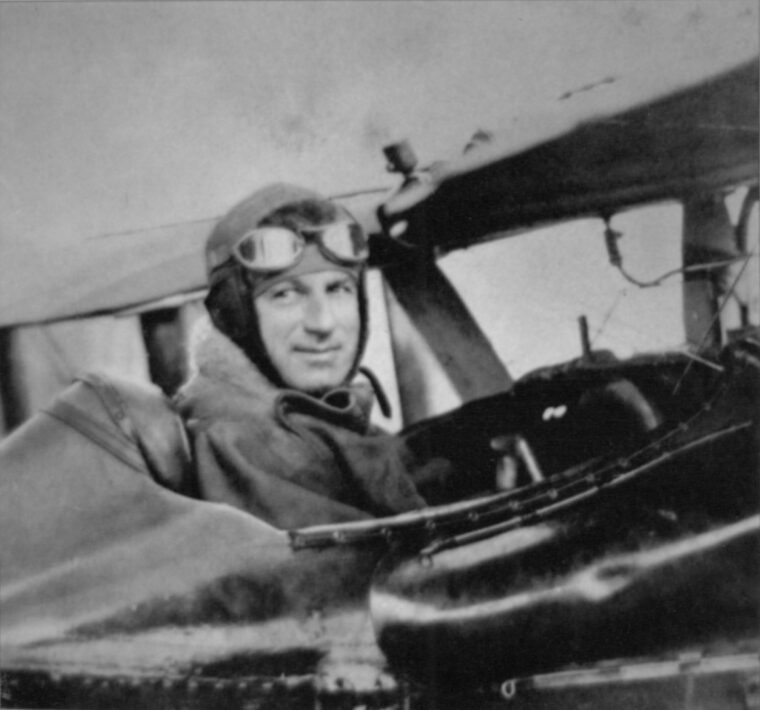
“I Can Shoot Those Things Down Very Easily.”
Douhet also taught his disciples that heavily armed bombers in mass formations could operate by day against fighter defenses. The publicity on Boeing’s creation hailed the new airplane as a “Flying Fortress,” but it was hardly as impregnable as the name indicated. The first B-17s lacked armor plate to protect the crew, carried only five machine guns, and made no provision for a tail gunner. The B-17 faithful believed that was sufficient since, in their minds, the aircraft could attain altitudes beyond reach of interceptors. In the late 1930s, a hot shot fighter pilot, Lieutenant John Alison, confounded the assurance of promoters of the early B-17 when he convincingly demonstrated he could push his fighter close enough to the weaponless rear of a Flying Fortress and shoot it down. His feat, however, did not immediately persuade the bomber command to install a tail gun. Nobody in the Air Corps was going to listen to a pursuit pilot, a second lieutenant who claimed, “I can shoot those things down very easily.”
The conviction that strategic bombers could operate unmolested by enemy aircraft influenced the development of U.S. fighters. Escorts to protect the big planes would be unnecessary, and the design for a fighter focused upon a machine that would protect the ground forces. Not until the Battle of Britain in 1940 and the appearance of the Messerschmitt Me-109 did the American experts realize that the speed and altitude of an enemy fighter challenged their assumptions about the invulnerability of the B-17. The standard American fighter, the Curtiss P-40 Tomahawk—a good gun platform, while speedy in a dive—had a limited ceiling and rate of climb. It would not be deployed in the European Theater.
Desire for an interceptor with longer range and performance higher in the sky had belatedly resulted in the twin-engine Lockheed P-38 Lightning, and aeronautical engineers returned to their drawing boards to blueprint what would become the Republic P-47 Thunderbolt and the North American P-51 Mustang. At the same time manufacturers modified the big bombers, now including the Consolidated B-24 Liberator, which had slightly more range and bomb weight capacity than the B-17, adding better means to defend themselves: up to 12 .50-caliber machine guns, a tail gunner, and armor for the crew. When the enemy changed tactics during World War II and began head-on attacks, a chin turret would be added to give greater firepower forward.
From the start of World War II, the British intended to follow Trenchard’s maxims on carrying the war to the industrial centers and the population of the foe. In May 1940, when the Royal Air Force attempted daylight strategic raids by its fleet of bombers, German ack-ack and interceptors killed more flyers than the enemy lost on the ground. B-17s purchased from the United States carried out a few daylight missions with dismal results and curdled RAF enthusiasm for the Flying Fortress. American analysts noted that the Brits insisted on operating above 30,000 feet, which overloaded the oxygen systems, froze weapons, and reduced airspeed, making the planes vulnerable to the Me-109s. The RAF B-17 missions relied on an inferior bombsight, and the maximum number of aircraft in formation was a mere four. The British, using their own bombers, switched to nighttime assaults, on industrial areas. They made no pretense of discriminating between residential neighborhoods and factories.
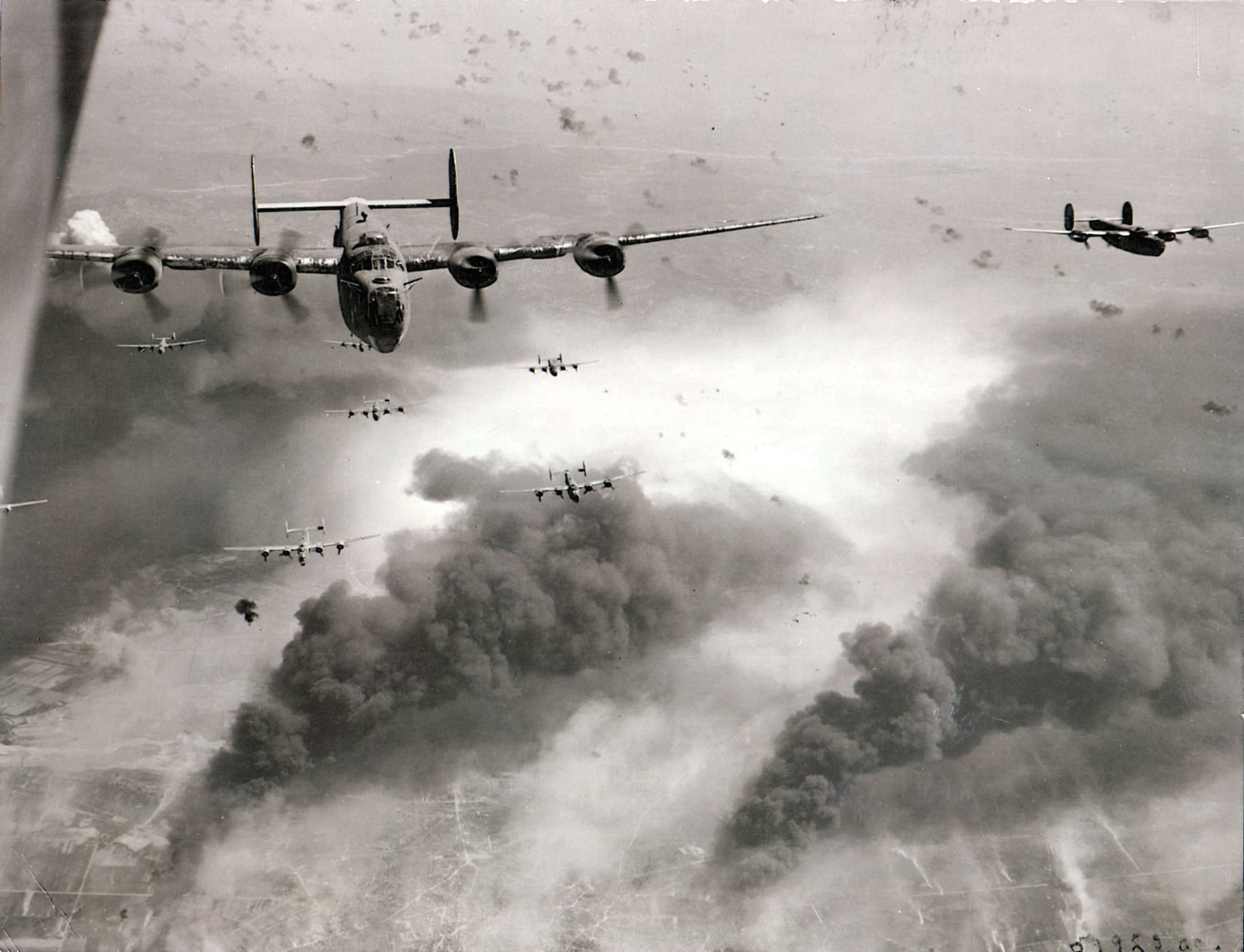
The British tried to convince the Air Corps that it too should operate after dark. That would have negated the entire basis for the designs of the B-17 and B-24 and wasted the hundreds of hours training of bombardiers with the Norden device. Faith in daylight precision bombing thus remained intact as the United States entered World War II. There was no disagreement with the British on the purposes and potentials of air power. Maj. Gen. Ira Eaker, who headed the American bomber command in 1942, said, “After two months spent in understanding British Bomber Command, it is still believed than the original all-out air plan for the destruction of the German war effort by air action alone was feasible and sound and more economical than any other method available.” He did agree that since the resources then available were limited, a ground effort might be required.
The Eighth Air Force opened for business in England in May 1942, but neither B-17s nor B-24s were available. Most of the handful of combat-ready heavyweights had been sent to the Philippines, where Japanese attacks destroyed many of them. As a result, when the Eighth inaugurated its campaign against the Axis powers on July 4, 1942, the mission had little resemblance to strategic bombing. The 15th Bombardment Squadron borrowed 12 A-20 twin-engine Bostons from the RAF, and only half of these were flown by U.S. crews. They struck at four airfields in Holland, flying at an extremely low level before unloading their bombs and strafing the base. They inflicted minor damage, and three were shot down.
Not until some six weeks later did the Eighth launch a true daylight strategic bombing mission. On a beautifully sunlit day, a dozen B-17s from the 97th Bomb Group headed for the Rouen (France) railroad yards. Accompanied by RAF Spitfires, they encountered light flak and no serious interference from German fighters. All returned safely, leaving behind them, said Eaker, head of the Eighth Bomber Command who flew in the lead plane, “a great pall of smoke and sand.” General Henry “Hap” Arnold, the Air Corps commander, declared, “The attack on Rouen again verifies the soundness of our policy of the precision bombing of strategic objectives rather than the mass bombing of large, city size areas.”
The Rouen raid achieved only nuisance value, and euphoria dissipated rapidly as the strategic bombing campaign intensified. Practice revealed substantial holes in theory. The Luftwaffe, manning high-performance Me-109s and Focke Wulf 190s, greeted marauders with a skill and savagery that tore huge holes in the fabric of the Eighth. Losses of from 10 to 20 percent frequently resulted from the deadly combination of flak and fighters. Air Corps analysts calculated that adequate self-defense required a minimum of 300 bombers, a figure difficult to achieve during the first 18 months of U.S. aerial combat in Europe. Nevertheless, the Americans strove to meet their responsibilities for round-the-clock assaults. The RAF, exclusively bombing at night, including an occasional thousand-plane raid, endured heavy losses of air crews to flak and night fighters. Post-mission photo analysis indicated their destruction of industrial works was far from commensurate with the casualties.
By the spring of 1943, the Allied air command realized that there were not sufficient aircraft to hammer day and night the entire war industry of occupied Europe and Germany with precision. The RAF had no accuracy with its night raids, and the scattershot approach of the Eighth Bomber Command did not cripple production. Eaker, as commander of the Eighth’s Bomber Command, proposed a “Combined Bomber Offensive,” suggesting “it was better to cause a high degree of destruction in a few really essential industries than a small degree of destruction in many industries.”
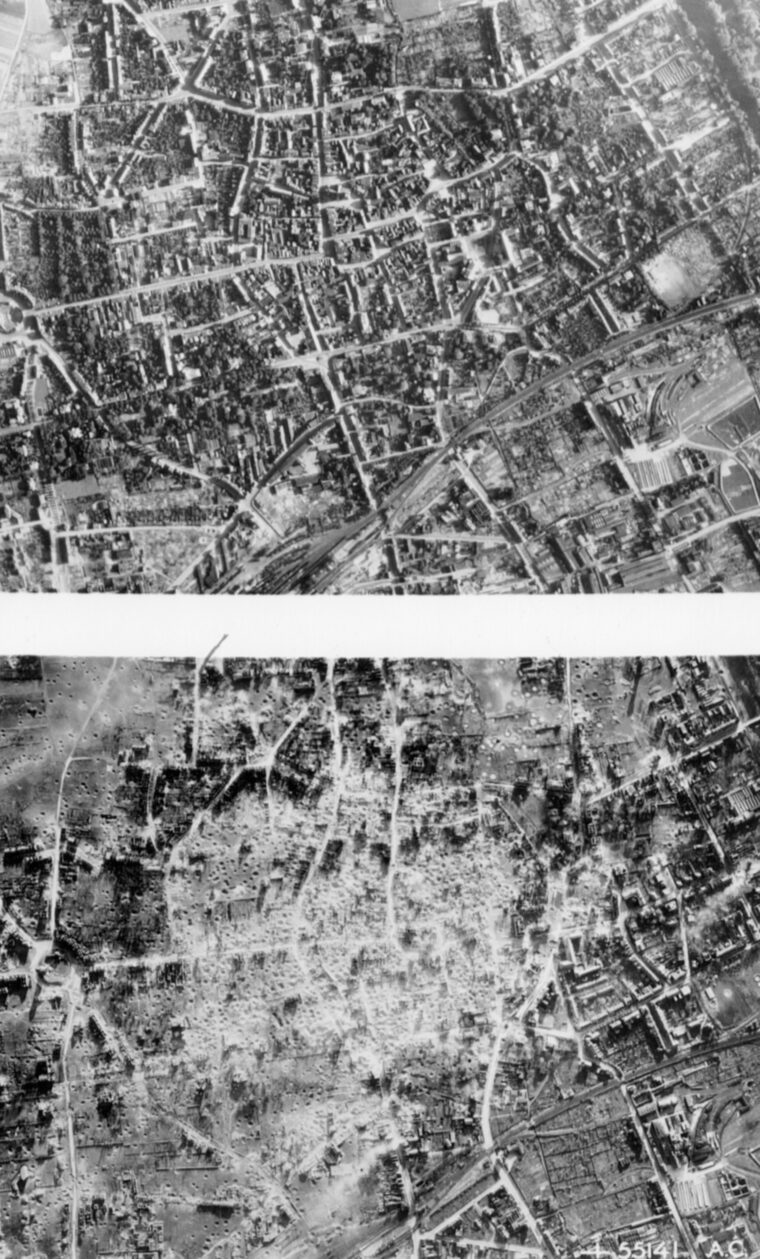
Toward this end, the U.S bomber command mounted an attack on Romania’s Ploesti oil fields and refineries using B-24s flying from fields in North Africa. To avoid detection and increase accuracy, the participants in Operation Tidal Wave flew at low level. The raiders inflicted modest harm. Ploesti had been functioning well below capacity, and it was a simple matter for production to recoup. The Tidal Wave bombers suffered horrendous losses: more than 300 killed, hundreds wounded or captured, 79 interned in Turkey. Just 33 of the 178 Liberators involved could be listed as fit for duty after the mission. No one could seriously propose any further low-level daylight attacks for the heavyweights.
Because of the Luftwaffe’s success and with an eye to controlling the air when the time arrived for an invasion of Europe, in June 1943 the Allied high command created Operation Pointblank, announcing, “It has become essential to check the growth and to reduce the strength of the day and night fighter forces which the enemy can concentrate against us … first priority in the operation of British and American bombers … shall be accorded to the attack on German fighter forces and the industry upon which they depend.” German airbases and factories producing planes and essentials like ball bearings drew priority.
General LeMay Calculated That Flak Gunners Needed to Fire 372 Rounds to Guarantee a Hit on a B-17
The enemy met Pointblank with ferocity. In August 1943 a maximum effort that put up 300 bombers to strike Schweinfurt and Regensburg cost the Americans 60 planes—600 crewmen—shot down with many additional aircraft badly damaged. A basic problem lay in vulnerability to interceptors. Spitfires, with a range limited to 100 miles beyond the British coast, could not provide protection on longer missions. Bereft of escorts, the 10 or 12 .50-caliber machine guns of the B-17s and B-24s were not enough to fend off the swarms of Me-109s and FW-190s. Another weakness centered on use of the Norden bombsight, which required a clear view of the target and a steady hand. In the cloudless, peaceful skies over Texas, it might have been possible for a skilled operator in the boast of the times to put a bomb in a pickle barrel. But frequently over Europe heavy rain or snow, thick overcasts, and buffeting winds obscured or misled bombardiers. Even when the target was clearly visible, torrents of antiaircraft shells intimidated the men at the toggle switches and those in the cockpits. Bombs fell away prematurely, or the plane suddenly veered off because the pilot seized the controls and yanked the ship out of imminent danger.
General Curtis LeMay, commander of the 305th Bomb Group, after analyzing the photo reconnaissance intelligence, decided a prime culprit for poor accuracy was failure to maintain a steady course. He decreed that none of his pilots could take evasive action over a target. He had calculated that flak gunners needed to fire 372 rounds to guarantee a hit on a B-17 in level flight. Whether his arithmetic was correct or not, LeMay sought to persuade his subordinates by announcing he would fly the lead aircraft on missions. In fact, the first ship over a target had a better chance for survival because antiaircraft personnel adjusted for range and speed as a flight passed. Disciplined behavior, however, added effectiveness, although no one could compensate for weather that obscured a target.

LeMay also innovated a better defense for the big bombers. He insisted upon a tight, stepped-box formation that enabled gunners to provide mutual assistance. A bomb group could bring to bear from 200 to 600 machine guns on an attacker. His demands for more training by navigators and bombardiers and closed-in formations earned him his nickname of “Iron Ass,” but the 305th proved his point with more effective results and fewer losses.
In contrast to LeMay’s carefully worked out stepped-box formations, inexperienced Brig. Gen. Nathan Bedford Forrest, newly installed as an air division commander, ordered the 95th Bomb Group to use a flattened formation, with aircraft wingtip to wingtip. Over Kiel, the Luftwaffe feasted upon the 95th, shooting down eight, including the bomber carrying Forrest. The disaster proved the efficacy of LeMay’s design.
Pointblank failed to halt aircraft manufacture because the enemy had decentralized its critical industries. In particular, the Third Reich had arranged to import vital ball bearings from neutral Sweden. To inflict lasting damage required repeated raids on factories, and in 1943 the Air Corps lacked enough planes and crews. It was also during Pointblank that the initial desire to minimize civilian casualties by concentrating on military installations, manufacturing plants, and transportation hubs began to give way. Bomber command directed the crews on a mission against the rail junction at Munster to unload on the city center, hitting the town’s workers. According to one historian, the attack upon civilians “did not produce any moral qualms among the airmen; some cheered … their own sufferings had bred bitterness.”
Throughout the last months of 1943, the U.S. bomber campaign staggered from the continued onslaughts of German fighters and the increasingly effective flak aided by improved German radar systems. Losses continued to soar above a prohibitive 10 percent. P-38 Lightnings and P-47 Thunderbolts with American pilots had replaced the Spitfires, but without drop tanks they could only venture as far as the Rhine River, leaving the big fellows exposed to the depredations of interceptors. At the beginning of 1944, newly arrived P-51 Mustangs equipped with Rolls Royce engines debuted and quickly won recognition as the best fighter in the theater.
The tide turned with Big Week, starting February 20, 1944. The occasion introduced new features to the American effort. Lt. Gen. Jimmy Doolittle had replaced Eaker at the helm of the Eighth Air Force. Doolittle modified his predecessor’s policy that no fighters, the Little Friends, could ever leave the bombers to chase the enemy. Doolittle ordered the P-38s, P- 47s, and P-51s to attack the Luftwaffe on sight, provided they left some guardians to screen the Big Friends. The open season on German fighters was a product of an abundance of fighter squadrons and the development of fuel drop tanks that gave the Lightnings, Thunderbolts, and Mustangs hundreds of additional miles of flight distance. The Germans, in spite of the raids upon their industrial areas, were able to replace downed aircraft, but the predatory tactics of the Americans slashed the number of skilled, experienced pilots dueling with the Allied air arm. As the war progressed into 1944, the reservoir of capable German airmen suffered severe attrition.
For the first day of Big Week, the Eighth Air Force, working with British Bomber Command and the U.S. Fifteenth Air Force operating from Italy, dispatched 880 Fortresses and Liberators along with 835 fighters deep inside Germany. The Eighth alone claimed 115 enemy fighters shot down. That may have been an exaggeration, but the ability to launch similar massive raids six times within seven days surely knocked the Luftwaffe back on its heels. The incessant battering of German cities and their people forced the Third Reich to withdraw some fighter squadrons from the Eastern Front and bring others back from France and the Low Countries to protect the home front. Similarly, antiaircraft batteries were redeployed from both fronts.
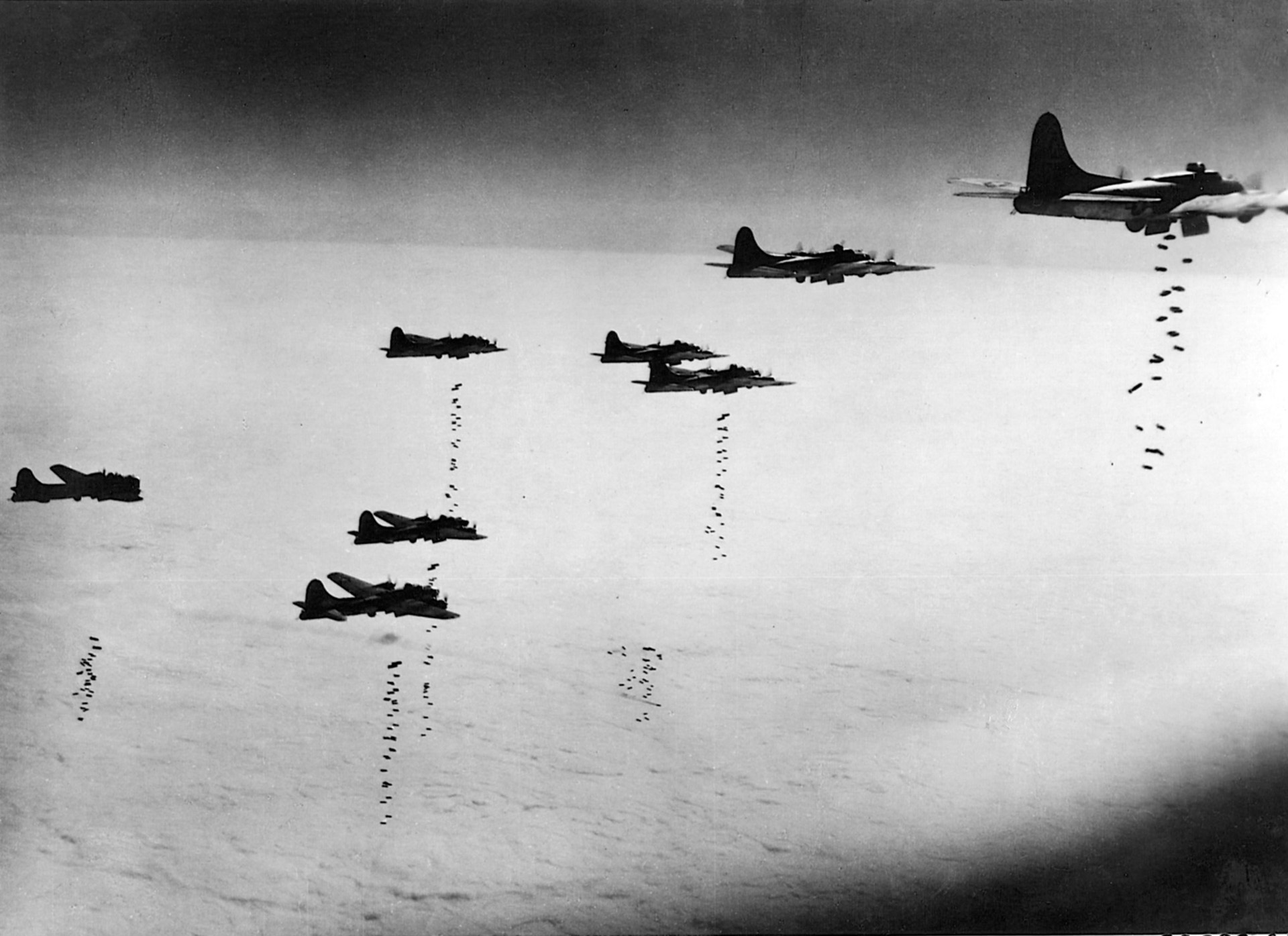
With Operation Overlord, the invasion of Normandy, now planned for June, Allied strategy switched from attacks deep inside Germany and began to work over the defensive infrastructure along the French coast: rail lines, roads, bridges, tunnels, viaducts, and the communications network. While the bombers struck at German airfields and marshaling yards, the P-47, equipped with bombs, proved to be a great train buster and general interdiction tool. Gradually, many of the Thunderbolt squadrons transferred to the Ninth Air Force, which was more of a tactical support weapon, while the Eighth added P-51s to its rosters.
On D-day, a thick, nearly impenetrable overcast of more than 10,000 Allied bombers and fighters hovered over the English Channel and the Normandy shoreline. The pre-D-day campaign had produced sensational results. At most two or three German planes dared to appear as the invaders struggled ashore. The Luftwaffe preferred to husband its assets rather than risk confrontation with the canopy of American bombers and fighters, along with numerous planes from the RAF.
Fighter pilot Martin Low, in a P-38, said, “From June 6th until about 10 days later, we flew three missions a day, bombed and strafed anything that moved within 50 to a hundred miles of the coast, mostly trains.” The air attacks sharply curtailed movement of German reinforcements to help defend the beaches. Patrols like that mentioned by Low menaced daylight convoys or trains. One serious failure of the Allied air effort was the inability to destroy the blockhouses and emplacements that guarded the shores. Fearful of dropping bombs on friendly forces, the landing area missions were confined to drops a few miles beyond the beaches, and most of the bombs exploded harmlessly in empty fields.
Lt. Gen. Fritz Bayerlein Reported That 70% of His Soldiers Were “Either Dead, Wounded, Crazed or Dazed.”
Six weeks later, as the U.S. Third Army prepared to break out of Normandy toward the end of July 1944, it was exposed to the perils of high-altitude bombing aimed at tactical situations. Poor visibility prevented two-thirds of the scheduled 900 bombers to even reach the target near St. Lo, but 343 B-17s and B-24s unloaded on a poorly defined zone outlined by ground forces commander General Omar Bradley. Many of the bombs fell in no-man’s land between the opposing armies, but some exploded among GIs, killing 25 and wounding more than 60. A subsequent 1,500-plane attack that included fighter-bombers from the Ninth Air Force and the dreadnoughts of the Eighth devastated the Germans. Lt. Gen. Fritz Bayerlein of the Panzer Lehr Division said, “Artillery positions were wiped out, tanks overturned and buried, infantry positions flattened and all roads and tracks destroyed… The shock effect on the troops was indescribable. Some of my men went mad and rushed around in the open until they were cut down by splinters.” He reported 70 percent of his soldiers “either dead, wounded, crazed or dazed.” The aerial assault opened the gates for the St. Lo breakout.
Campaigns like Overlord and the St. Lo mission mandated detours from the strategic bombing program. Similarly, when the first V-1 pilotless bombs struck London in June 1944, the British demanded immediate attacks to neutralize the launch installations near the French coast. Starting June 16, bombers with fighter escorts in what were called Noball raids hit several of the V-1 emplacements. By September, the advances into Normandy by the invaders eliminated the V-1 bases, but the more deadly V-2, a rocket-propelled explosive with a primitive guidance system fired from territory still held by the Third Reich, killed more than 9,000 Londoners. The Allies attempted to erase the source of the rockets with assaults on Peenemunde, where German rocket engineers using slave labor developed and then deployed the V-2.
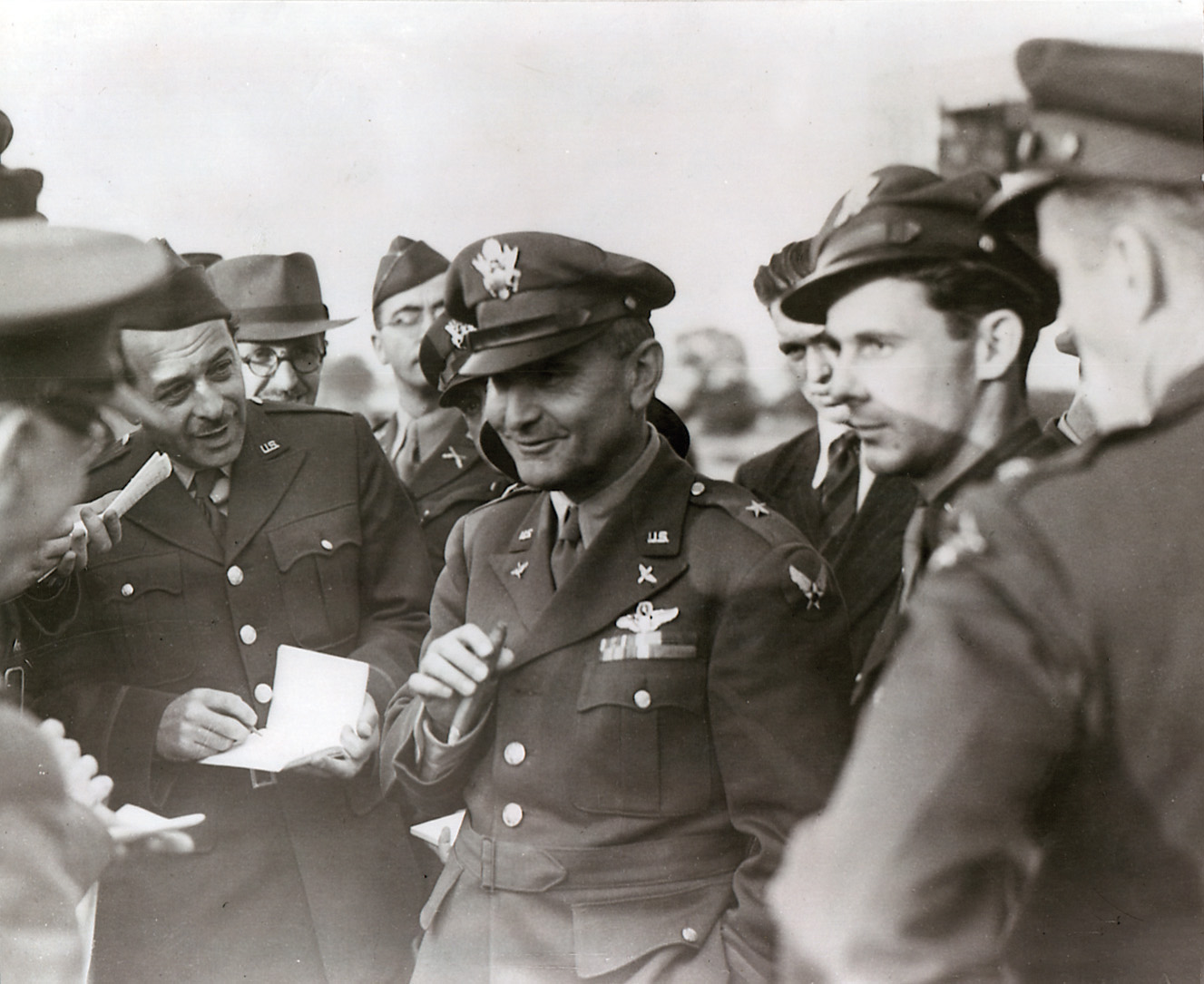
During the run-up to D-day, there had been one exception to the concentration on the defenses against the Allied invasion. After much debate about priorities for bombing campaigns, the British and Americans agreed to target oil, which was critical to the enemy war effort. Although the initial strike at Ploesti cost the Air Corps dearly, Allied planes pounded the Romanian fields and refineries regularly, reducing the flow to Germany. After the Soviet Red Army invaded Romania, driving the country to change sides and shut off the spigot, the Third Reich relied on its reserves and production of synthetics.
Starting in May 1944, the Americans struck at depots and manufacturing sites for ersatz oil 127 times, while the RAF mounted 53 raids. Acutely aware of the threat to their lifeline, the Germans massed antiaircraft around the synthetic fuel installations. Tail gunner Eddie Picardo recalled one mission: “The flak was so thick it blotted out the sun. For a full 10 seconds it was like a total eclipse.” The ship next to his disappeared in a bright flash of fire. His plane returned home with basketball-sized holes in the fuselage.
On a single day in October 1944, during the missions to Politz, Ruhland, Bohlen, and Rothensee, the Eighth Air Force counted 40 planes shot down, only 3 percent of the more than 1,400 on the raid, but still more than 358 air crew missing in action. Furthermore, 700 bombers reported damage. However, the campaign against synthetic petroleum paid off. The amount available to the Wehrmacht and the Luftwaffe fell to half the total needed. The Me-262 jet fighters were towed to runways by cows, recruits received ever fewer hours of flight instruction, and artillery literally depended on horsepower to move.
As the strategic bombing campaign resumed in earnest after D-day, the Allied air forces attempted to extend their reach farther east. Diplomatic negotiations resulted in an agreement that U.S. bombers flying out of England could blast the most distant targets of the Third Reich and then continue several hundred miles to land at Soviet airbases. Refueled and rearmed, they could hit enemy installations on the way back to their home fields. The Soviets welcomed planes and crews. Unfortunately, their hospitality did not include the right for P-51s to fly protective patrols while the hosts threw a lavish banquet for their guests. A German reconnaissance plane discovered the sleek bombers sitting on the ground. A subsequent raid wrecked nearly 70 aircraft. The shuttle program fizzled out after a few more operations.
“If You Saw London Like I Saw It, You Wouldn’t Have Any Remorse. I Don’t Know Anyone Who Was Remorseful.”
With streams of bombers blasting targets even as far as Poland, there was talk of using the aircraft to halt the genocidal program at the Auschwitz concentration camp, either by targeting the buildings there or the rail lines that hauled the condemned to the gas chambers. The U.S. War Department opposed any diversion for that purpose as weakening “decisive operations elsewhere.” It was suggested that surely a handful of aircraft could have been spared from the thousand plane raids, but a detour that split off a few bombers would have denied them the protection of the massive formations. Furthermore, high-altitude strikes often missed small objectives like a rail line or bridge and the enemy could repair smashed tracks rather quickly. In any event, there was little political or military desire to attack the murder camps.
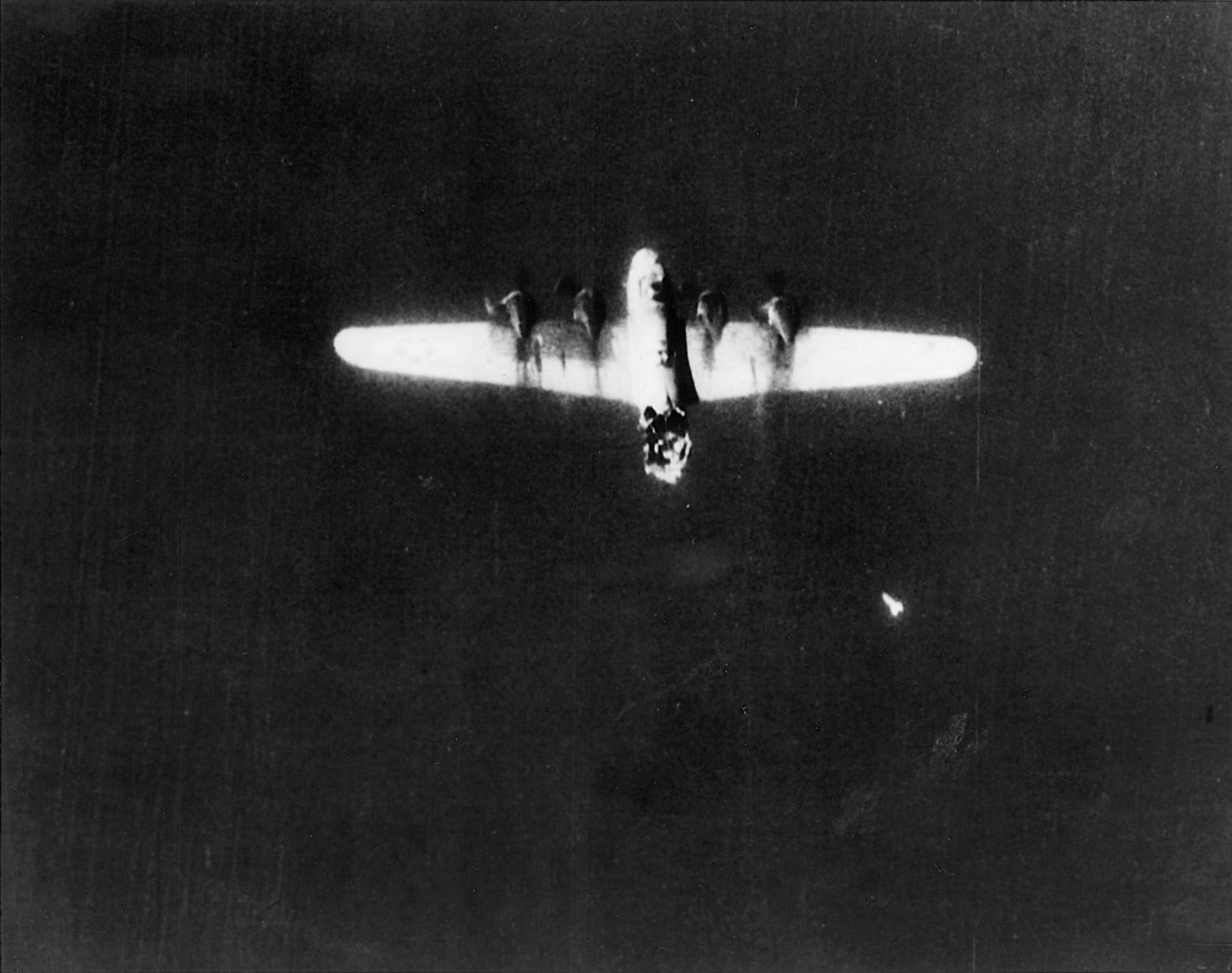
While the British openly wreaked havoc on civilians, the United States claimed it restricted its bombing to war facilities. That may have been a guiding principle, but invariably American bombers killed or maimed noncombatants. In the turbulence of flak and enemy fighters, with targets obscured by weather, and due to navigation errors, ordnance frequently exploded well off the mark. A miss by only 500 yards could plant a bomb in a residential area, and there were instances in which the drop struck miles from the objective. Toward the end of the war, the U.S. air command accepted the RAF policy and struck Berlin and Dresden without any firm strategic goal.
Few airmen cringed at the indiscriminate use of air power. Dave Nagel, an engineer and gunner with the 305th Bomb Group, said, “If you saw London like I saw it, you wouldn’t have any remorse. I don’t know anyone who was remorseful. We didn’t know whether an area was populated or not. We were supposed to be over a target, normally a factory, when we let the bombs go, but we assumed it was surrounded by civilians.”
Curtis LeMay, who departed Europe to direct the devastation from the air upon Japan, said, “As to worrying about the morality of what we were doing, nuts! I was a soldier, soldiers fight. If we made it through the day without exterminating too many of our own people, we thought we’d had a pretty good day.”
The advocates of strategic bombing and carrying the war to the civilian population had argued that these campaigns would bring the Third Reich to its knees without the need for brutal, bloody combat on the ground. They were wrong. By May 1945, the people of Germany may have lost their enthusiasm for Adolf Hitler’s regime and its wars, but they continued to carry on. It was only after the Allied armies with their superior manpower and firepower overran the German forces that surrender came.
A post-V-E Day survey estimated that Germany lost less than 4 percent of its productive capacity, and even a devastated city like Hamburg recuperated to 80 percent of its output within a few weeks. That said, the air war contributed significantly to the eventual defeat of the enemy. Foremost, the raids on fuel depots and synthetic plants curtailed the Luftwaffe’s ability to train pilots and deploy their new jet fighters in sufficient numbers. The Allied ground forces operated without interference from the air. The attacks on fuel sources destroyed the vaunted mobility of German armor, and the battering of rail and road nets strangled supply lines.To be sure, the successes of the Soviet forces on the Eastern Front played a major role in weakening the ability to resist, but at the same time, the armies on the Western Front could not have advanced as swiftly without the strategic bombing campaigns.
Acclaimed author Gerald Astor has written numerous books on the topic of World War II, including Voices of D-Day and The Mighty Eighth. He resides in Scarsdale, New York.
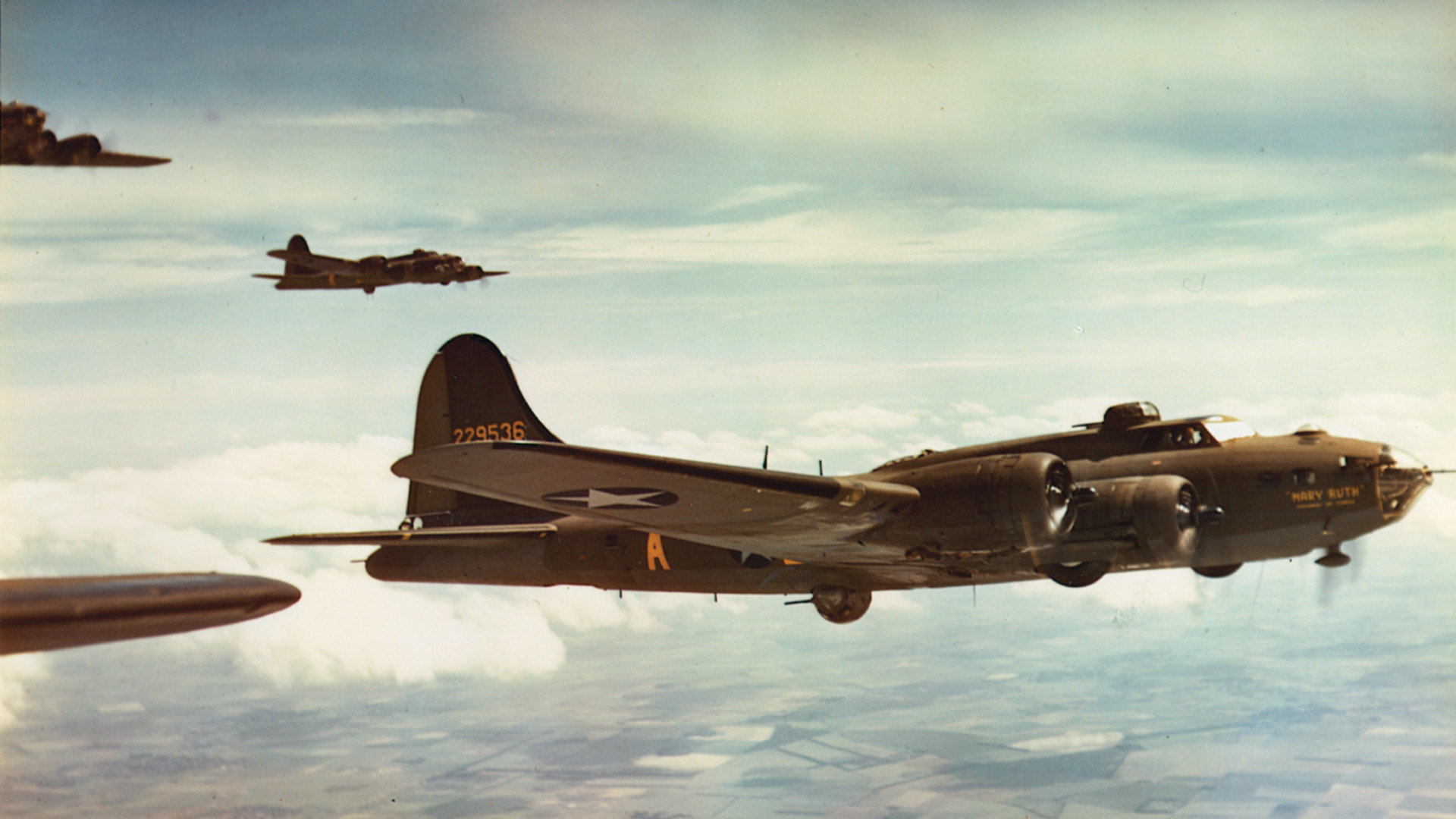
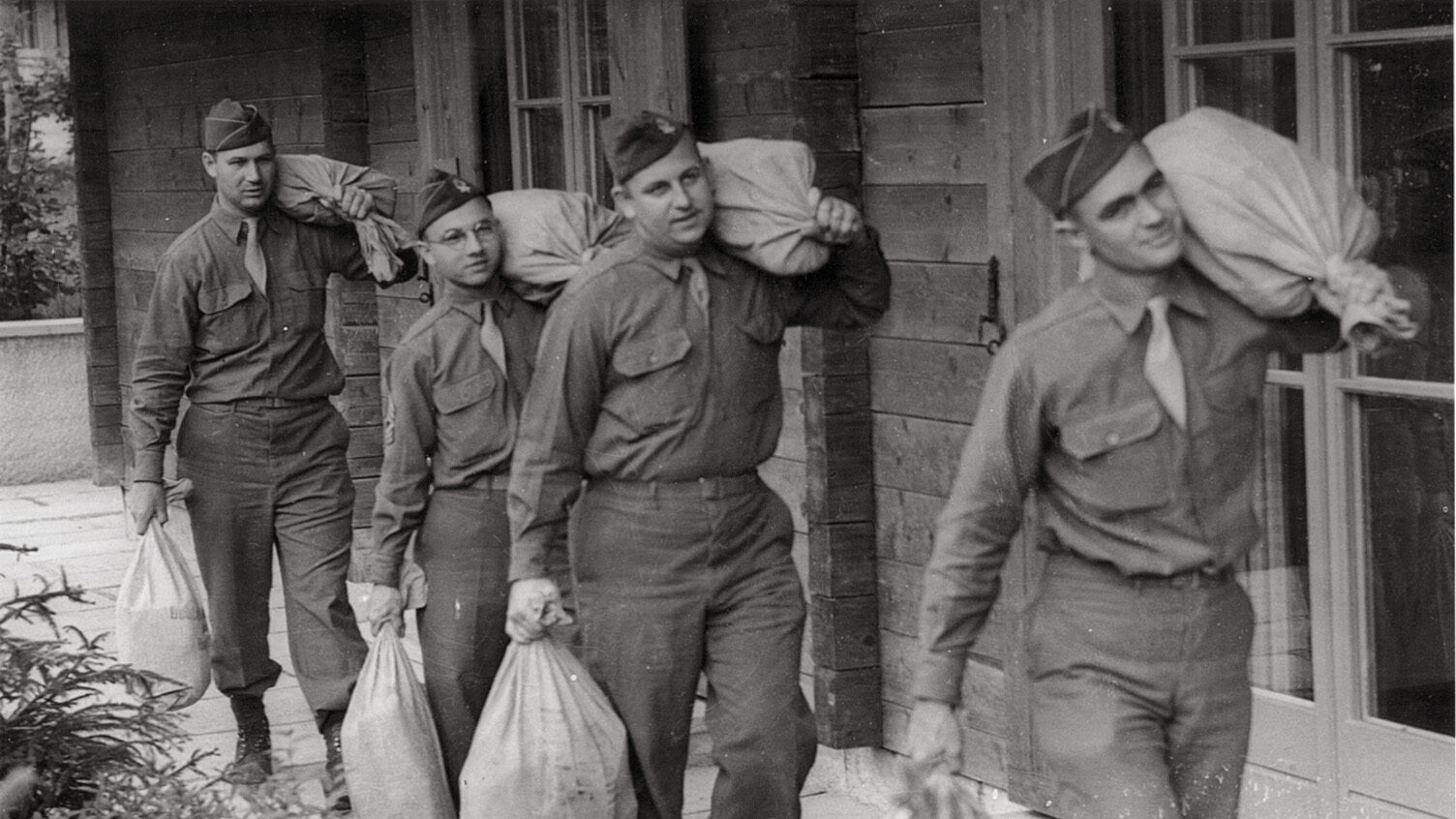
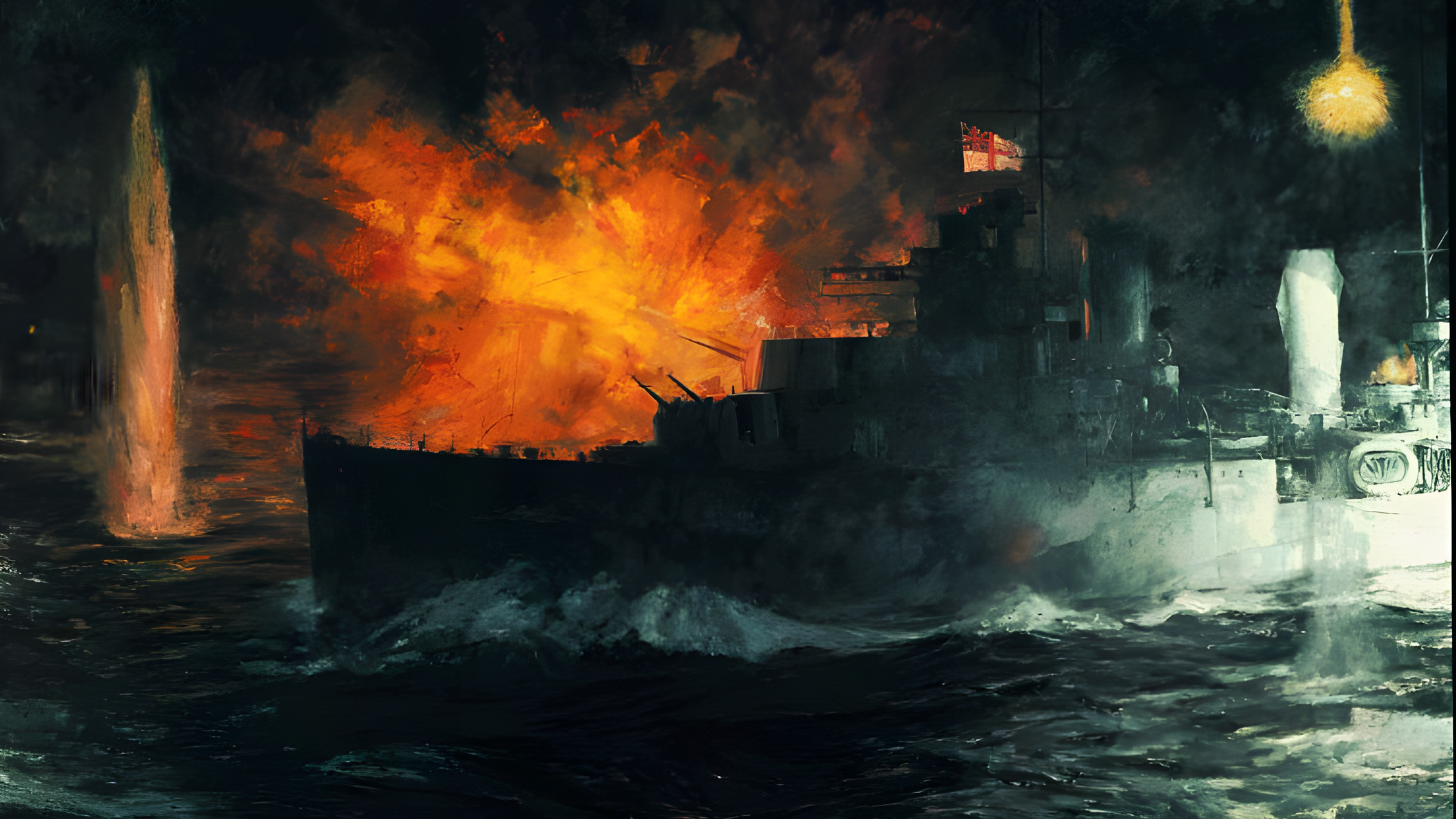
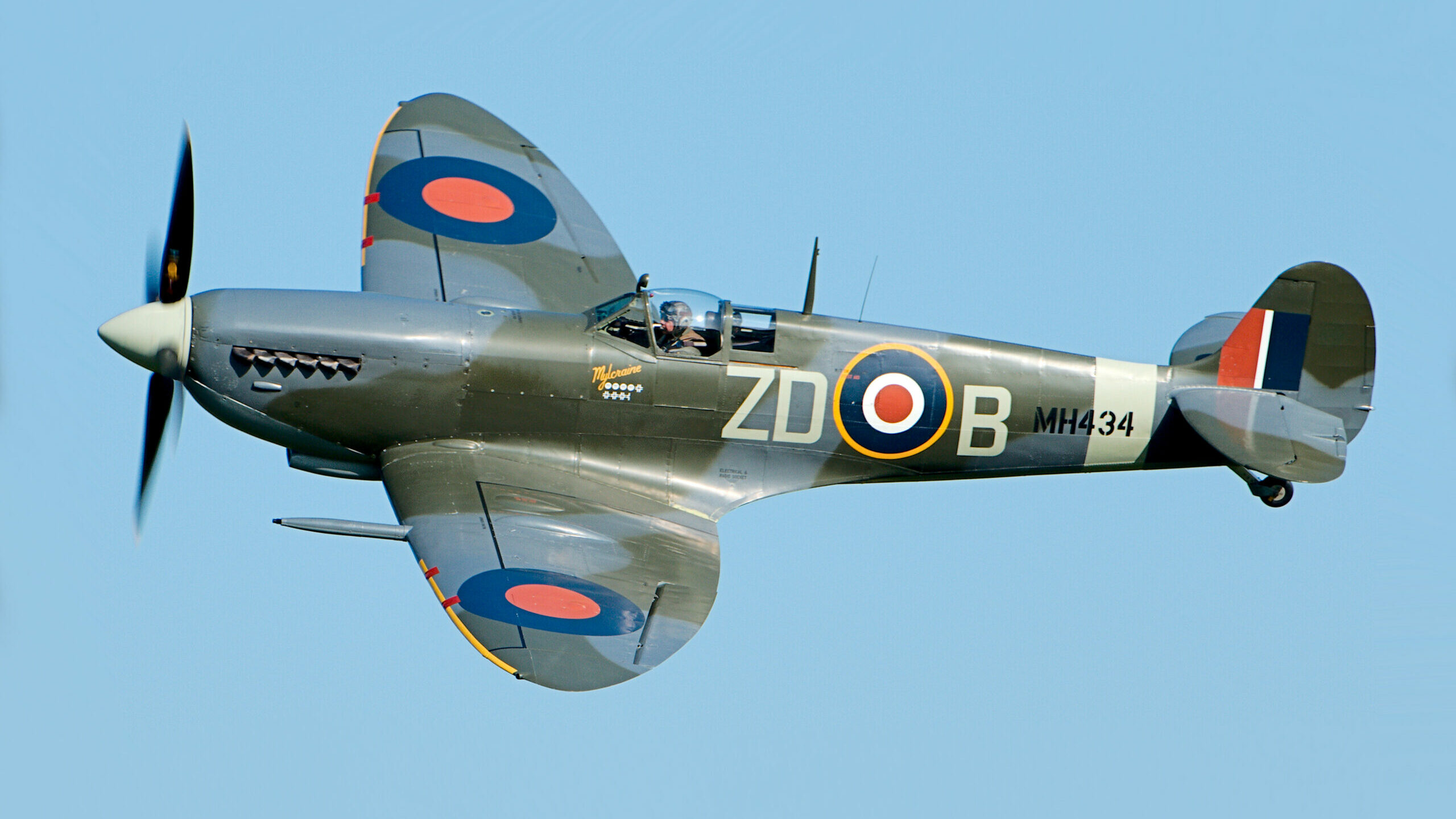
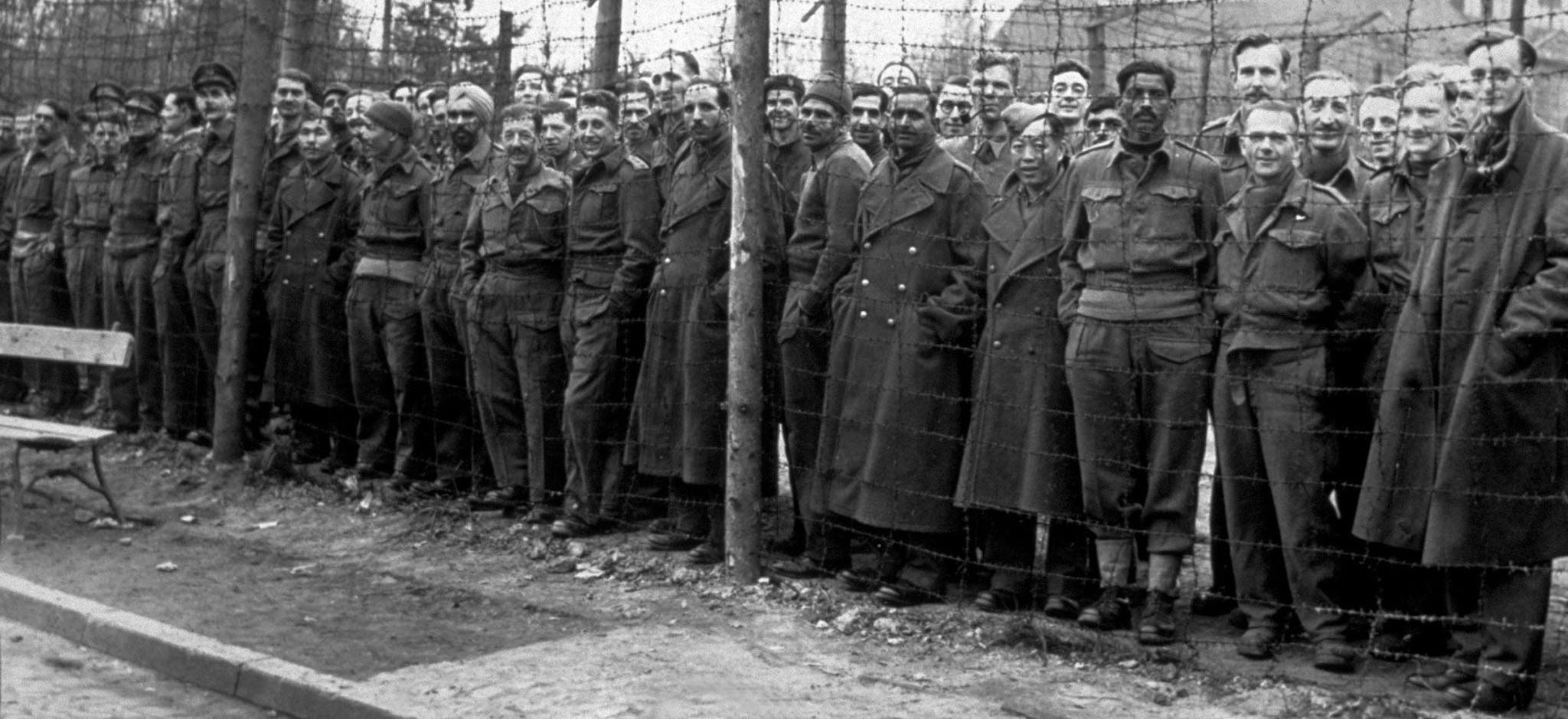
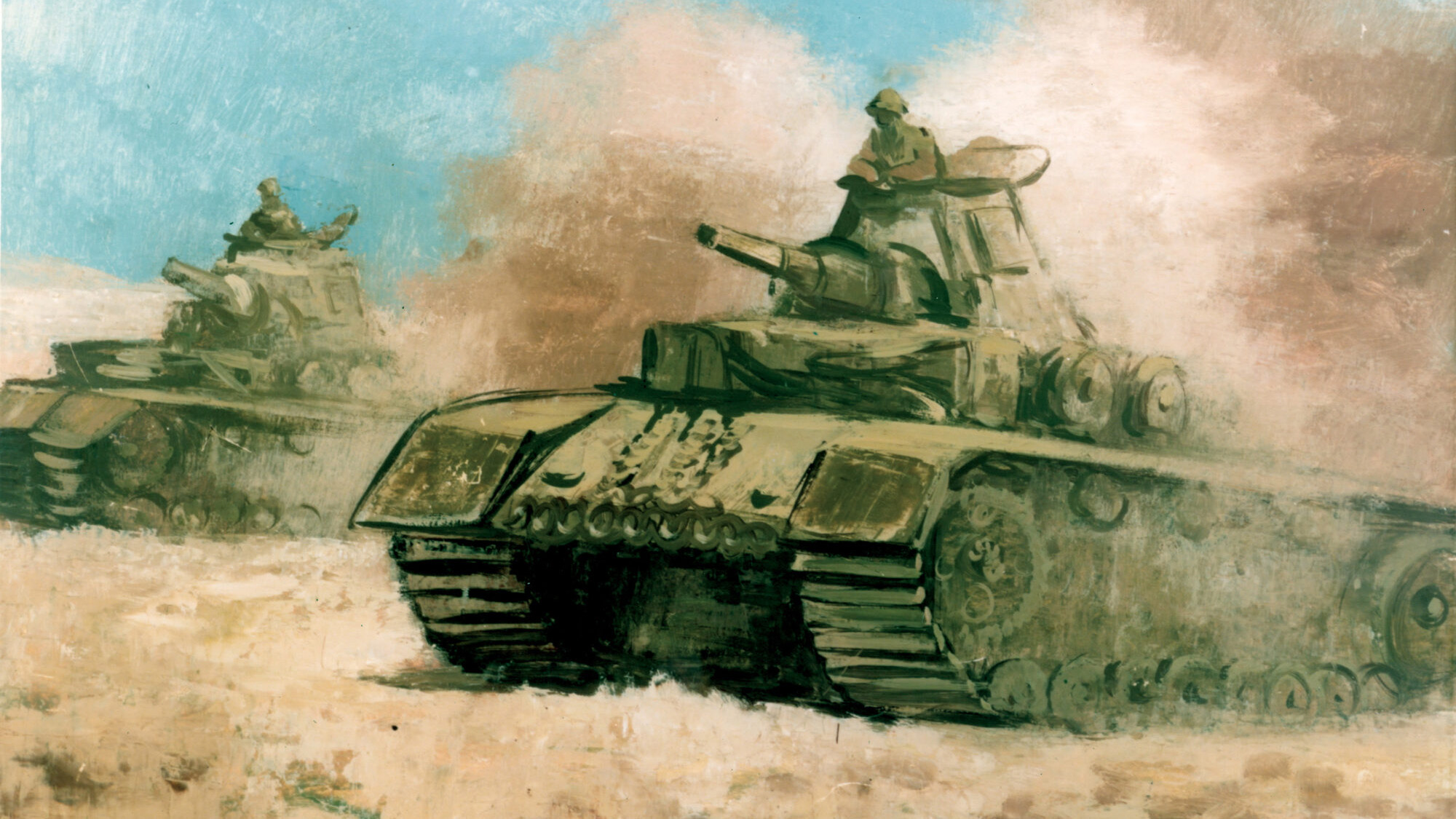
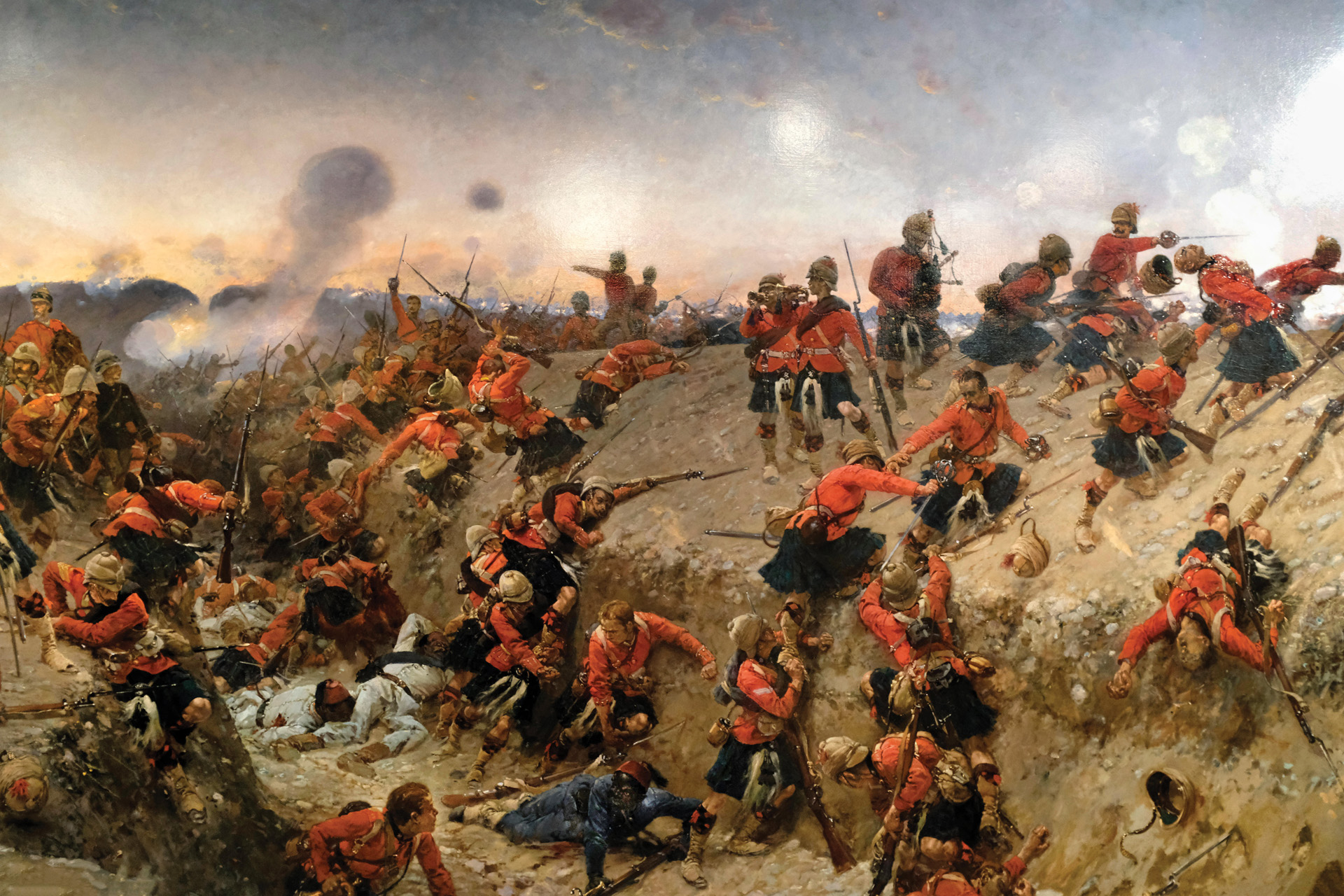

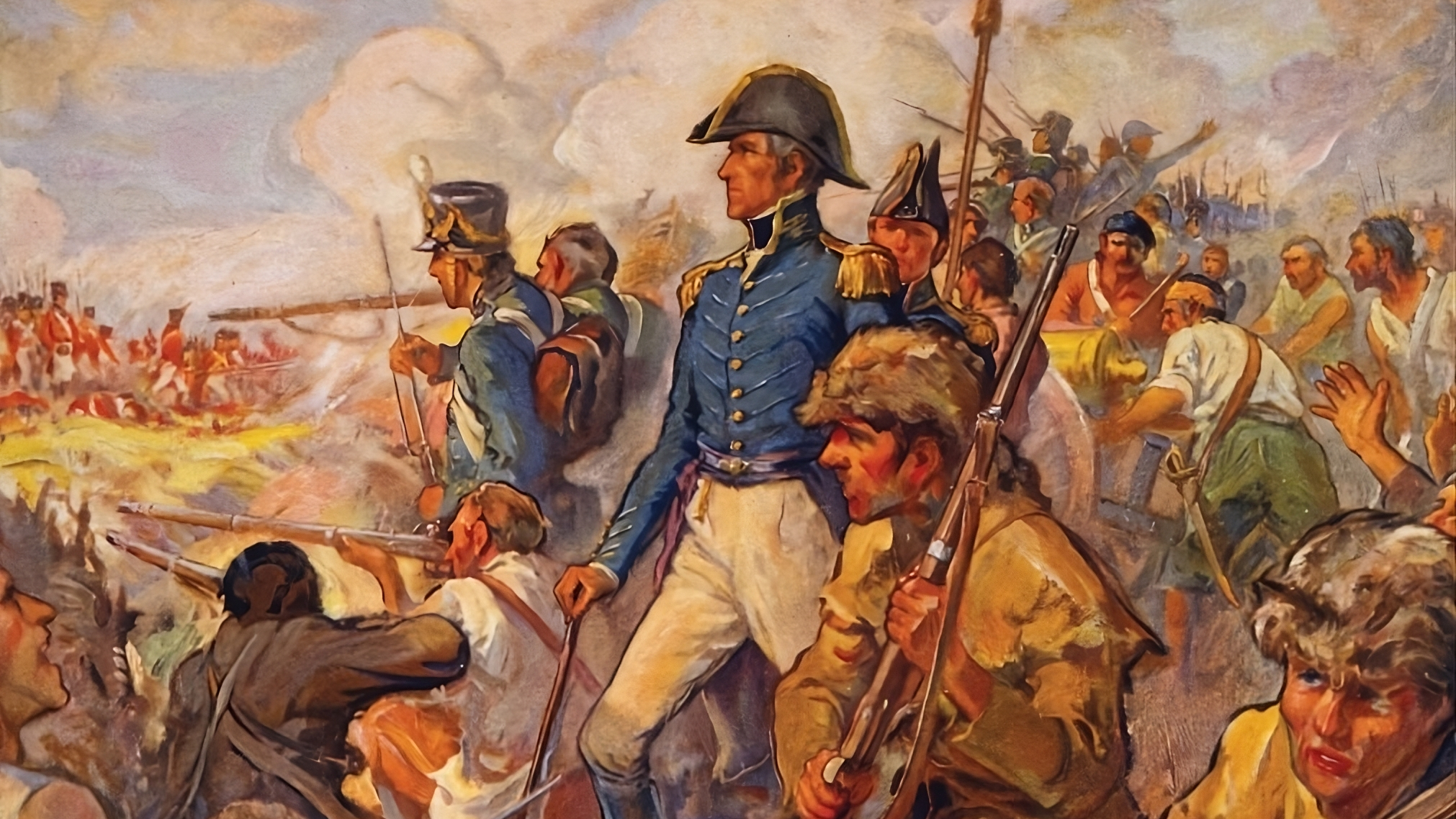
Join The Conversation
Comments
View All Comments